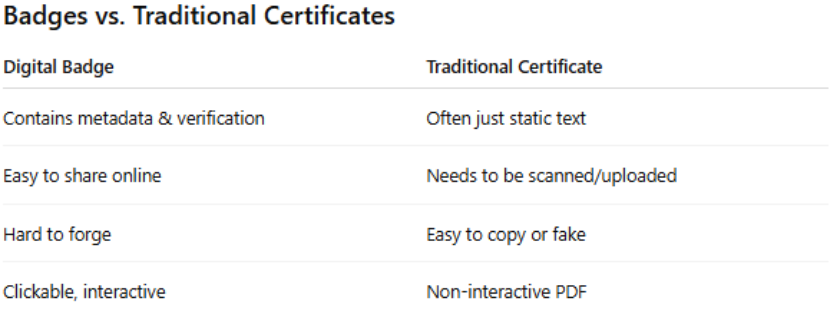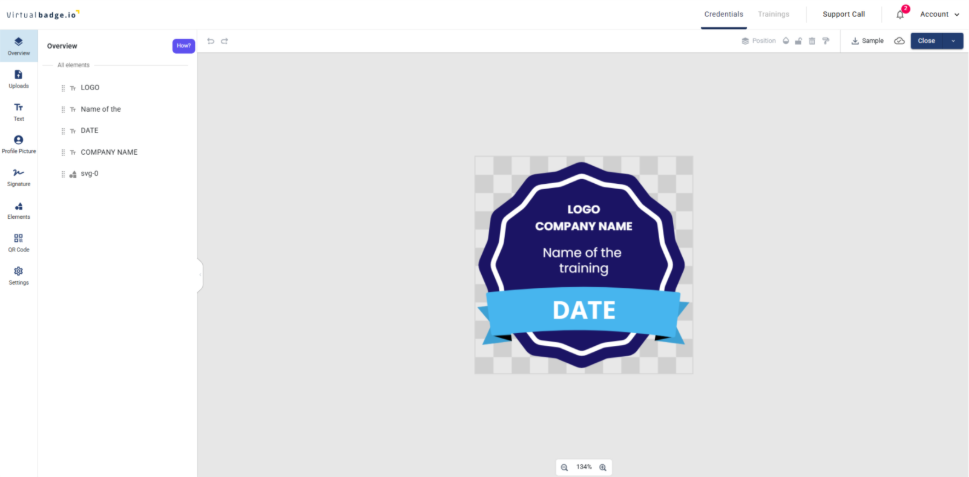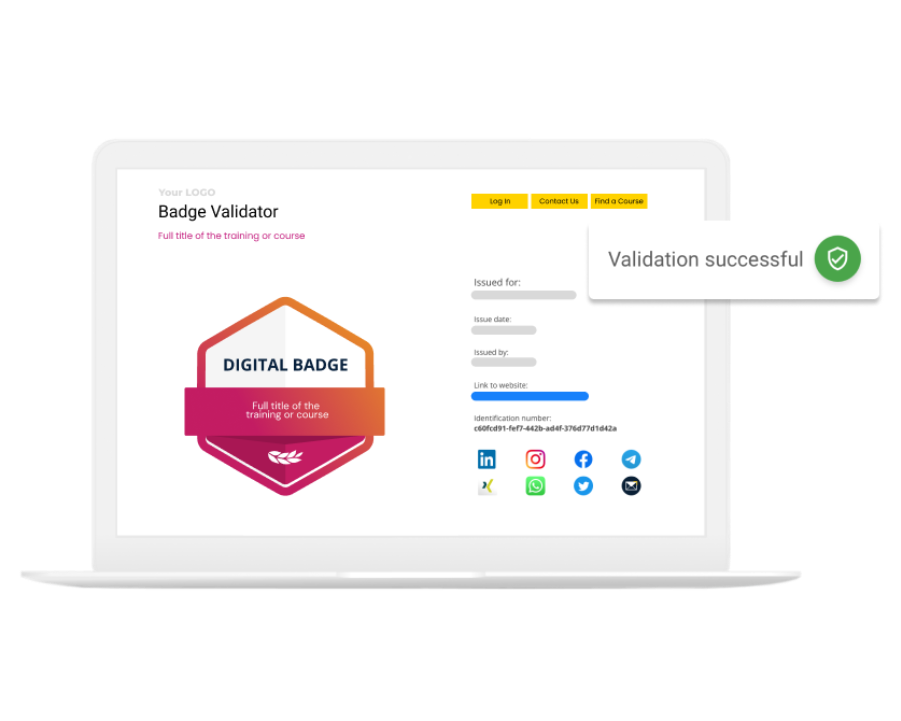No user accounts required for your recipients -
Existing certificates and badges always stay valid


A practical guide for educational providers to design, issue, and manage digital badges that boost learner engagement and trust.



The way learning is documented and recognized has fundamentally changed. Traditional paper certificates and static PDF files have long served as proof of accomplishment, but they no longer meet the needs of a digitally connected world.
Learners expect credentials that are:
✅ Easy to share online
✅ Secure and tamper-proof
✅ Instantly verifiable by third parties
For educational institutions, training centers, first aid academies, and even corporate L&D departments, this shift presents both a challenge and a huge opportunity. Those who adopt digital badges position themselves as innovators, strengthening their reputation and providing learners with real value.
A digital badge is more than a graphic. It is a portable, data-rich micro-credential that combines:
Because badges are stored and accessed online, they offer benefits that traditional certificates cannot. For instance, if a learner posts a badge on LinkedIn, potential employers can click directly on the badge to view verified details — instantly confirming it is legitimate.

This combination of security, shareability, and data transparency is why badges have become a key standard in professional learning.
Let us explore why more educational providers are adopting digital badges and how they directly support learners and organizational goals.
Badges create milestones learners can look forward to. Rather than waiting for a final certificate at the end of a program, micro-badges can mark the completion of key modules. This gamification effect keeps participants engaged.
For example, a first aid organization might award a digital badge after completion of CPR basics, another after advanced trauma management, and so on. Learners see their progress visually accumulate.
Every time a learner shares a badge on LinkedIn, Facebook, or their personal website, it acts as free marketing for the issuing organization. The badge image often carries the provider’s logo, colors, and program name.
Tip: Encourage learners to add badges not only to LinkedIn profiles but also to email signatures. This extends visibility to every email they send.
Unlike paper documents or static PDFs that might be altered, badges include a secure verification link. Employers or partners can check this link to view a dedicated validation page showing:
This builds trust and eliminates costly manual verification calls.
Modern badge platforms provide dashboards that show:
Educational providers can use these insights to refine programs, demonstrate impact in reports, and highlight success stories.
Badges should be visually appealing and clearly represent your brand. Use:
This way, when badges appear on LinkedIn feeds, viewers immediately associate them with your organization.
Metadata is what transforms a pretty picture into a verifiable digital asset. Make sure to include:
This helps prevent fraud and ensures long-term value. Don’t worry—most digital badge providers today offer a simple, guided process that makes it easy to add all the necessary information.
Manual creation and tracking with spreadsheets can quickly become chaotic. We as Virtualbadge.io simplify the entire process. We allow you to:
This streamlines operations and gives learners a smooth experience.

Connect your badge platform to your LMS or registration system. As soon as a learner completes a module, a badge can be issued automatically. This avoids delays and manual mistakes.
Choose a solution that is transparent about where and how data is stored. We as Virtualbadge.io, processes data within the EU, ensuring full GDPR compliance.

Many learners do not automatically think about posting their new badge. Send a short follow-up email with clear instructions on how to:
This simple nudge can multiply visibility.
Instead of issuing one certificate at the end of a program, consider a series of badges that build on each other. Learners can proudly show each step of their journey. This is especially effective for multi-level trainings.
Use your platform’s dashboard to identify highly shared badges. Highlight these stories in newsletters or on your own social media to inspire future participants.
They issue badges for different modules like CPR, trauma care, and emergency response. This allows employers to verify exactly what skills an applicant holds.
They offer badges for specialized workshops or extracurricular programs, giving students micro-credentials alongside their degree.
Companies use badges to track internal training, such as compliance or leadership modules. Employees add these badges to internal profiles, making skills transparent across the organization.
Digital badges are no longer optional for forward-thinking educational providers. They enhance learner engagement, build trust through instant verification, and serve as a powerful marketing tool when shared across professional networks.
🎯 Next step:
Explore Virtualbadge.io to start designing, issuing, and tracking your own digital badges.
👉 Contact us to schedule a free demo.
* You can find the organisation ID in the URL when you access your LinkedIn Company page as an admin.


Marketing
Jul 18, 2025
5 min
Use Virtualbadge.io to design and send digital certificates that create trust - in less than 10 minutes.